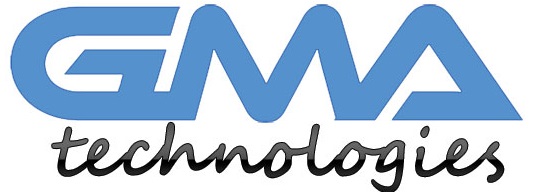Building a mobile app can be an exciting endeavor, but it can also become expensive and time-consuming if not planned efficiently. Whether you’re a budding entrepreneur with the next big idea or an established business looking to enhance your offerings, time and money are two precious resources you simply can’t afford to waste. But fear not! In this post, we’re diving into five smart mobile app development strategies that will empower you to streamline your app development process while keeping your budget in check. Say goodbye to common headaches and hello to efficiency as we uncover how proper planning and clever techniques can transform your vision into reality without breaking the bank.
Introduction: The Importance of Time and Money in Mobile App Development
Building a mobile app can be an exhilarating journey, but it’s also one that comes with its fair share of challenges. Time and money are often the biggest hurdles for developers and entrepreneurs alike. With countless decisions to make, from design choices to functionality features, it’s easy to find yourself lost in the process—and overspending while doing so.
The good news is that there are smart strategies you can employ right from the start. By being intentional about your approach, you not only enhance efficiency but also ensure maximized budget use. Whether you’re a seasoned developer or just starting out on your mobile app adventure, these five strategies will help streamline your development process without sacrificing quality. Ready to dive in? Let’s explore how you can save both time and money while creating an outstanding mobile app!
Strategy 1: Plan and Define Your App Before Starting Development
Before diving into mobile app development, take the time to plan and define your concept. This initial phase is crucial for setting a strong foundation.
Start by identifying your target audience. Understanding their needs and preferences will guide every decision you make during development.
Next, outline the core features of your app. Focus on what makes it unique and valuable to users. Prioritize these features based on user demand and technical feasibility.
Create wireframes or prototypes to visualize the user interface and experience. This helps in refining ideas before coding begins, saving both time and resources down the line.
Lastly, establish clear goals for your app’s performance metrics. Setting measurable objectives can help keep the project aligned with business outcomes throughout its lifecycle.
Strategy 2: Utilize Agile Methodology for Faster Development Cycles
Agile methodology is a game-changer in mobile app development. It promotes iterative progress through small, manageable chunks of work. This approach allows teams to adapt quickly to changes and feedback.
By breaking projects into sprints, developers can focus on delivering specific features efficiently. Each sprint results in a working version of the app, making it easier to identify issues early on.
Collaboration is key within Agile teams. Regular check-ins foster communication between developers and stakeholders, ensuring everyone stays aligned with project goals.
Moreover, this method encourages continuous improvement. After each cycle, teams reflect on their processes and outcomes to enhance future efforts.
Adopting Agile not only accelerates development but also ensures that the final product meets user needs effectively. Embracing flexibility becomes an essential asset in today’s fast-paced tech landscape.
Strategy 3: Use Cross-Platform Tools to Save Time and Resources
Cross-platform tools have revolutionized mobile app development. They enable developers to write code once and deploy it on multiple platforms, such as iOS and Android.
This approach significantly reduces the time required for development. Instead of creating separate apps for each operating system, you can maintain a single codebase. This streamlined process not only speeds things up but also cuts costs.
Additionally, cross-platform frameworks often come with pre-built components and libraries. These resources help speed up the design and functionality aspects of your app without sacrificing quality.
Moreover, using these tools enhances collaboration among team members. Developers familiar with different platforms can work together more efficiently within a shared framework.
Ultimately, leveraging cross-platform tools allows you to focus on innovation rather than getting bogged down by platform-specific details.
Strategy 4: Test Early and Often to Catch Bugs and Reduce Costs
Testing is a crucial part of mobile app development. The sooner you identify issues, the less costly they become to fix. Early testing helps catch bugs before they escalate into bigger problems.
Integrating testing throughout the development process allows for continuous feedback. This means adjustments can be made on-the-fly, ensuring your app remains user-friendly and functional.
Frequent testing also enhances collaboration within your team. Developers and testers work closely together, fostering an environment where improvements are made swiftly.
By adopting this strategy, you’ll save both time and money in the long run. A smoother launch leads to happier users who are likely to recommend your app to others. Prioritize early tests as part of your overall strategy for building a successful mobile app experience.
Strategy 5: Outsource Non-Essential Tasks to Experts
Outsourcing non-essential tasks can be a game-changer in mobile app development. By leveraging the expertise of third-party professionals, you can focus on what truly matters—building a great user experience.
Consider aspects like graphic design, marketing, or back-end support. These areas often require specialized skills that your team may not possess. Hiring experts ensures high-quality results without stretching your resources thin.
Moreover, outsourcing allows for quicker turnaround times. Professionals with experience in specific fields tend to work more efficiently than someone juggling multiple roles within your team.
This strategy also helps manage costs effectively. Instead of hiring full-time staff for temporary needs, you pay only for the services rendered. This flexibility means better financial control while still achieving exceptional outcomes.
Ultimately, smart outsourcing lets your core team dedicate their time to innovation and strategic planning rather than getting bogged down by every minor detail in the project.
Conclusion:
Navigating the world of mobile app development requires careful planning and strategic execution. By implementing these smart strategies, you can effectively save both time and money, allowing you to focus on what truly matters: creating a high-quality app that meets user needs.
Start by thoroughly defining your app concept before diving into development. This clarity will guide your decisions and keep you aligned with your vision. Embrace agile methodology to adapt quickly during the process, ensuring you’re responsive to changes without derailing progress.
Utilizing cross-platform tools is another game-changer; it maximizes resources while broadening your audience reach. Don’t underestimate the importance of early testing either—catching bugs sooner rather than later can significantly reduce costs associated with fixes down the line.
Lastly, consider outsourcing non-essential tasks to experts who can handle them efficiently. This move not only frees up your time but also brings valuable expertise into the mix.
By applying these mobile app development strategies thoughtfully, you’ll be well on your way to building an impressive mobile app that stands out in a competitive landscape while keeping expenses in check.

